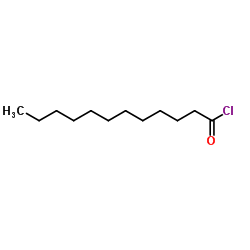A novel polyvinyl alcohol hydrogel functionalized with organic boundary lubricant for use as low-friction cartilage substitute: synthesis, physical/chemical, mechanical, and friction characterization.
Michelle M Blum, Timothy C Ovaert
Index: J. Biomed. Mater. Res. B. Appl. Biomater. 100(7) , 1755-63, (2012)
Full Text: HTML
Abstract
A novel material design was developed by functionalizing polyvinyl alcohol hydrogel with an organic low-friction boundary lubricant (molar ratios of 0.2, 0.5, and 1.0 moles of lauroyl chloride). The hydrogels were fabricated using two different techniques. First, the boundary lubricant was initially functionalized to the polymer, then the hydrogels were created by physically crosslinking the reacted polymer. Second, hydrogels were initially created by crosslinking pure polyvinyl alcohol, with the functionalization reaction performed on the fully formed gel. After the reaction, Fourier transform infrared spectroscopy and attenuated total reflectance spectra revealed a clear ester peak, the diminishment of the alcohol peak, and the amplification of the alkyl peaks, which confirmed attachment of the hydrocarbon chains to the polymer. Additional chemical characterization occurred through elemental analysis where an average increase of 22% carbon and 40% hydrogen provided further confirmation of attachment. Physical characterization of the boundary lubricant functionalized hydrogels was performed by water content and contact angle measurements. Water content dependency showed that method 1 had a direct relationship with boundary lubricant concentration, and method 2 displayed an inverse relationship. The contact angle increased as boundary lubricant concentration increased for the pure matrix material for both processing methods, suggesting that the hydrocarbons produced surface properties that mimic natural cartilage, and contact behavior of the biphasic system was dependent on processing method. Friction tests demonstrated a significant decrease in friction coefficient, with a maximum decrease of 70% and a minimum decrease of 24% for boundary lubricant functionalized hydrogels compared with nonfunctionalized polyvinyl alcohol hydrogels.Copyright © 2012 Wiley Periodicals, Inc.
Related Compounds
| Structure | Name/CAS No. | Molecular Formula | Articles |
|---|---|---|---|
 |
Dodecanoyl chloride
CAS:112-16-3 |
C12H23ClO |
|
Lipophilic prodrugs of apomorphine I: preparation, character...
2015-01-01 [Eur. J. Pharm. Biopharm. 89 , 216-23, (2015)] |
|
Use of multivariate statistical techniques to optimize the s...
2015-03-01 [Talanta 134 , 256-63, (2015)] |
|
Tartaric acid-based amphiphilic macromolecules with ether li...
2015-06-01 [Biomaterials 53 , 32-9, (2015)] |
|
Structural properties of pepsin-solubilized collagen acylate...
2015-10-01 [Mater. Sci. Eng. C. Mater. Biol. Appl. 55 , 327-34, (2015)] |
|
Preparation of double Pickering emulsions stabilized by chem...
2014-08-12 [Langmuir 30(31) , 9327-35, (2014)] |